I‘m fortunate to have experienced many of the world’s wonders – the Taj Mahal, the Great Wall, Christ the Redeemer, the Sydney Opera House – all of which were awe inspiring. But none quite took my breath away like the misty peaks of Machu Picchu.
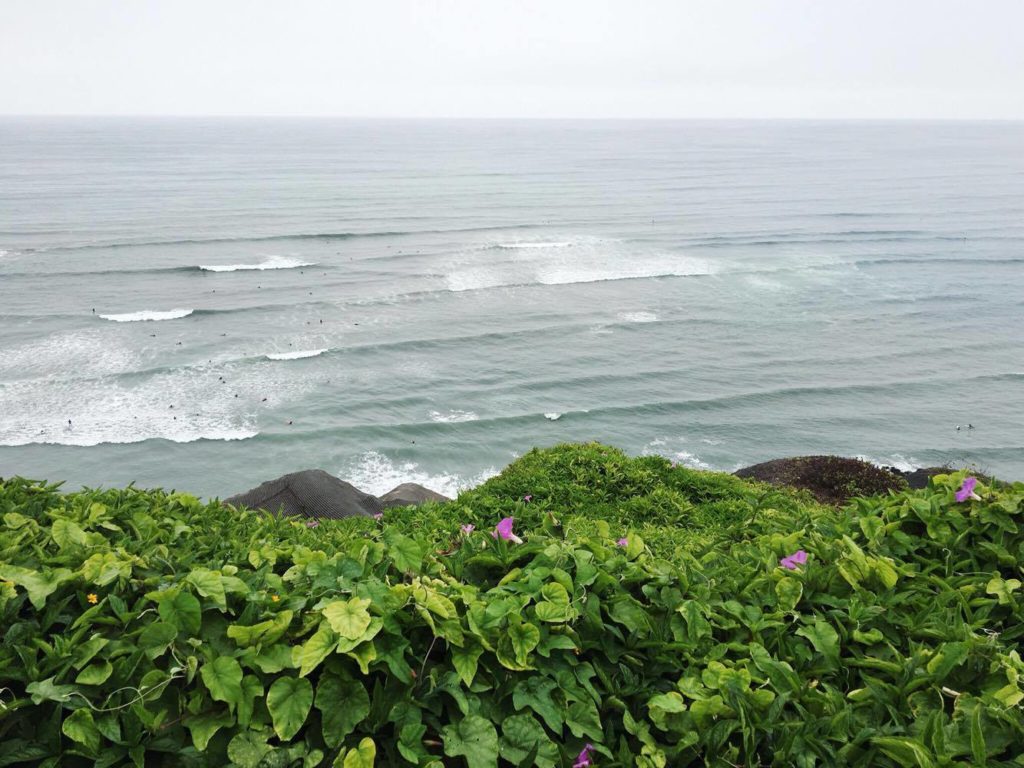
A cloudy day in the coastal town of Miraflores in the Capital city of Lima
Last November, my Russian and I along with two of our close friends took a trip to Peru. We spent a few days exploring the capital city of Lima, before flying to Cusco, just 70 miles away from Machu Picchu. After acclimating to the higher elevation in Cusco, which stands just over 8,000 feet compared to Lima’s 5,000ft, I was eager to embark on the final leg of our journey and conquer Machu Picchu. It was to be the highlight culminating our Peruvian adventure.
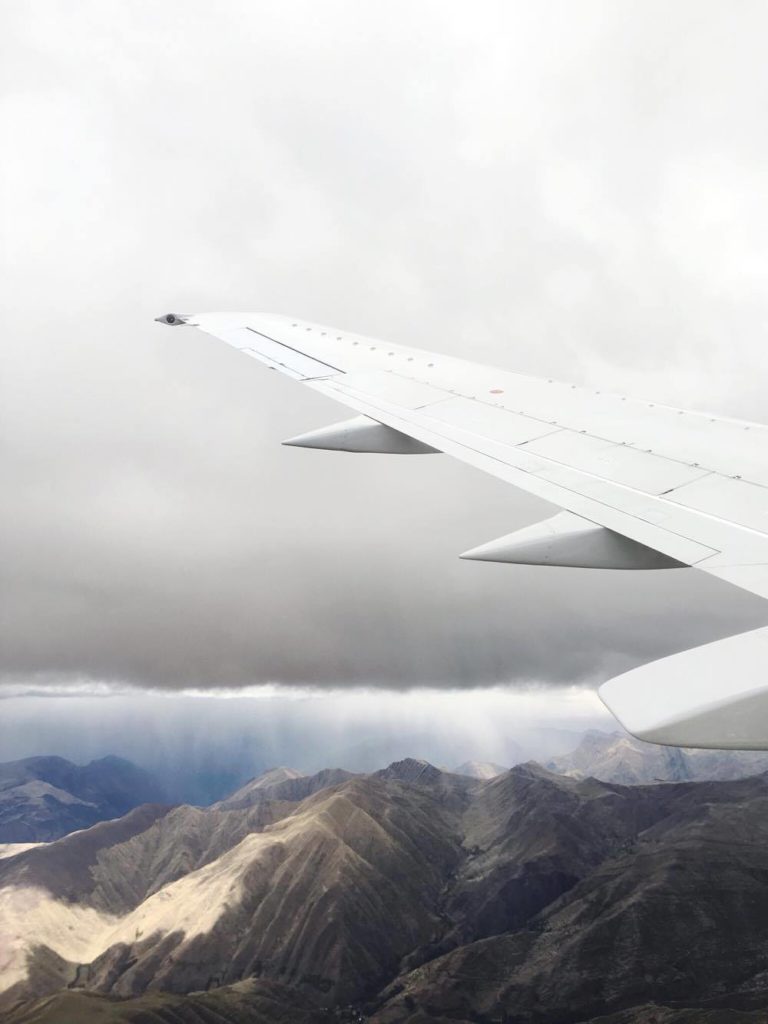
Flying past a storm over the Andes en route to Cusco
After much research and planning, we mapped out our itinerary. Though there are several options for reaching Machu Picchu, we opted for the fastest route – a 4 hour train ride to through the hills and valleys along the Urubamba River to the base of the mountain.
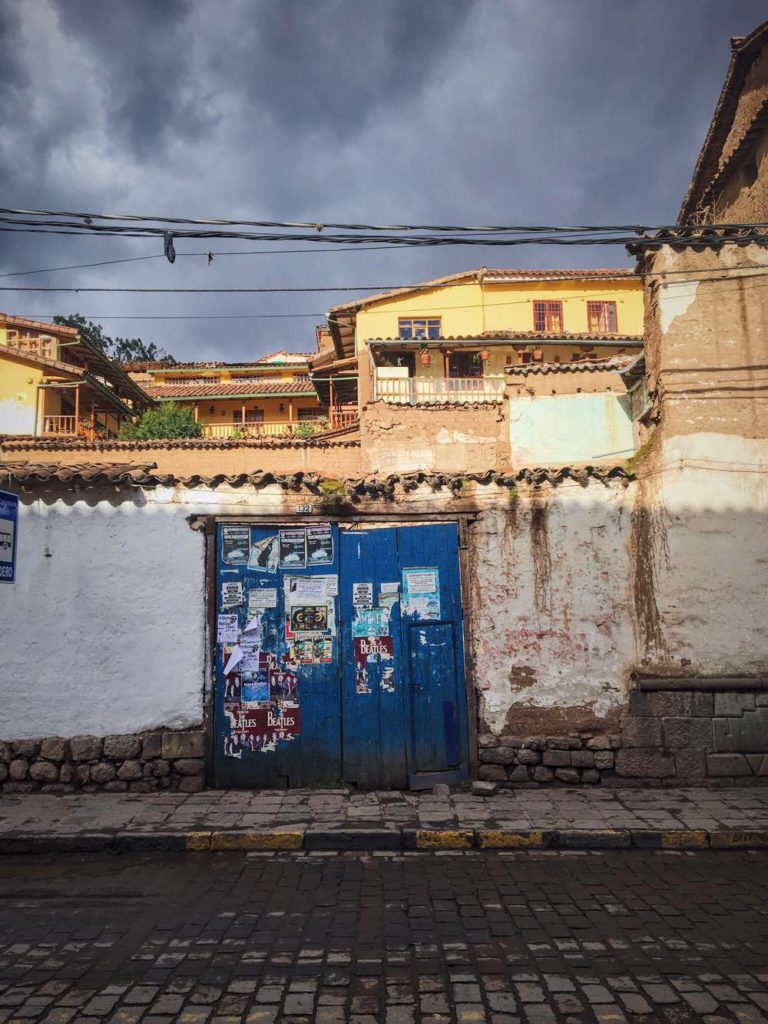
A colorful door in the city of Cusco
Our day began at 6:30am, when our driver, Algusto, arrived at our hotel in central Cusco. Temperatures were in the 40’s and the heavy rains from the night before had spilled over into the morning. The weather was typical for this time of year – November through April is rainy season in Peru. Unfortunately, I had packed for much warmer temperatures and my leggings and light sports jacket did little to shield the morning chill and rain.
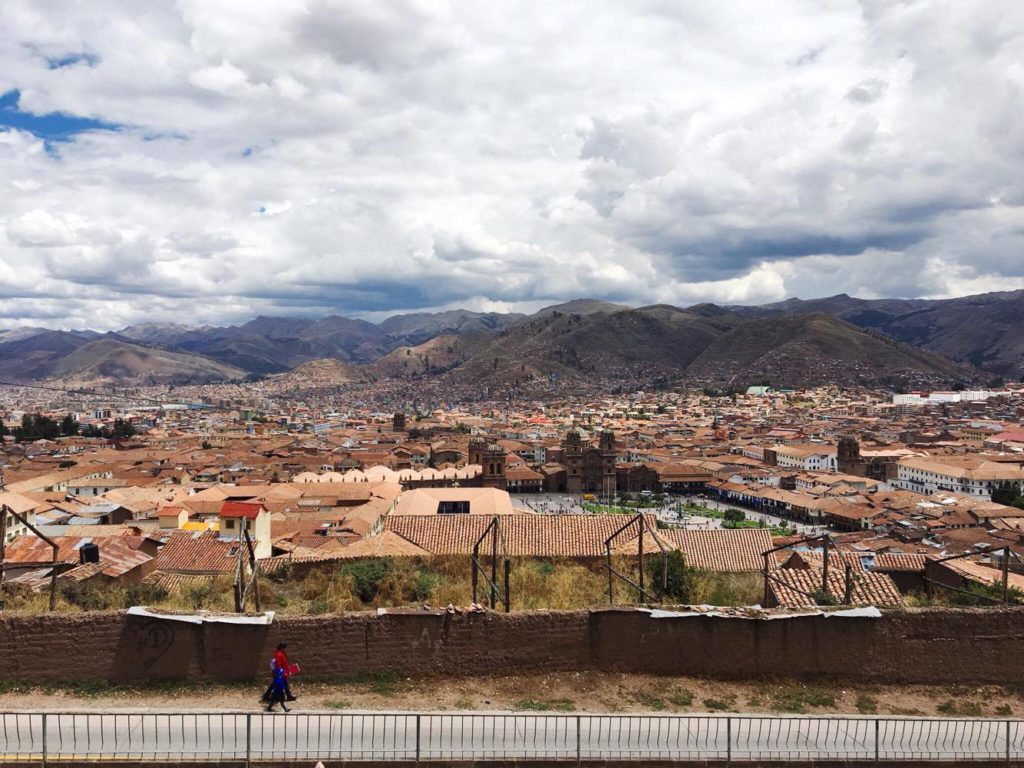
A hilltop view of Cusco
After a 30 minute ride through the hillside neighborhoods of Cusco, we arrived at the train station in Poroy (map it). The Peru Rail attendants dressed in their crisp navy and yellow uniforms offered a friendly greeting as we boarded the train.
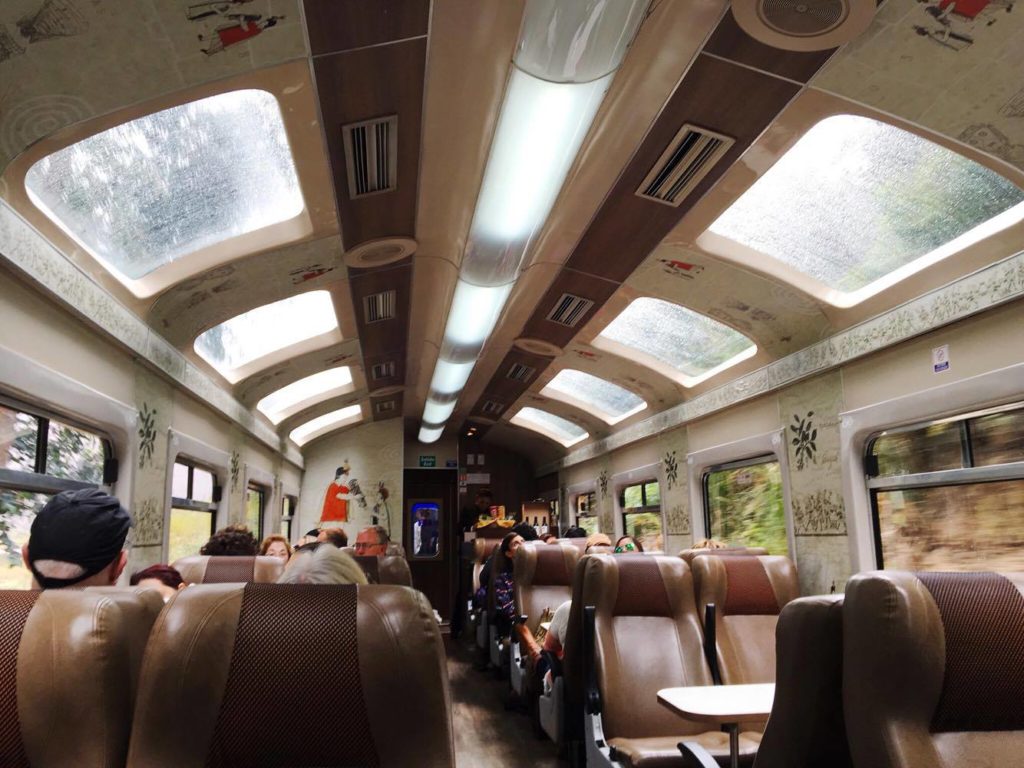
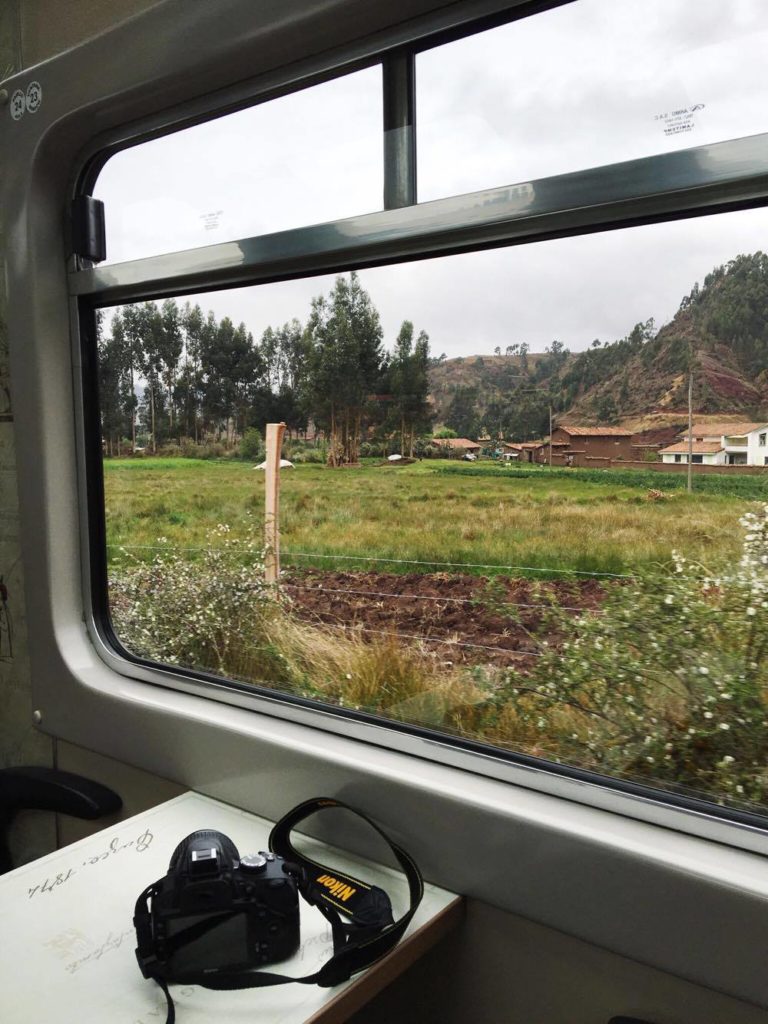
A glass ceiling ran the entire length of the train allowing for optimal viewing. We settled into our seats, double benches facing one another divided by a large table perfect for playing card games to help pass the time.
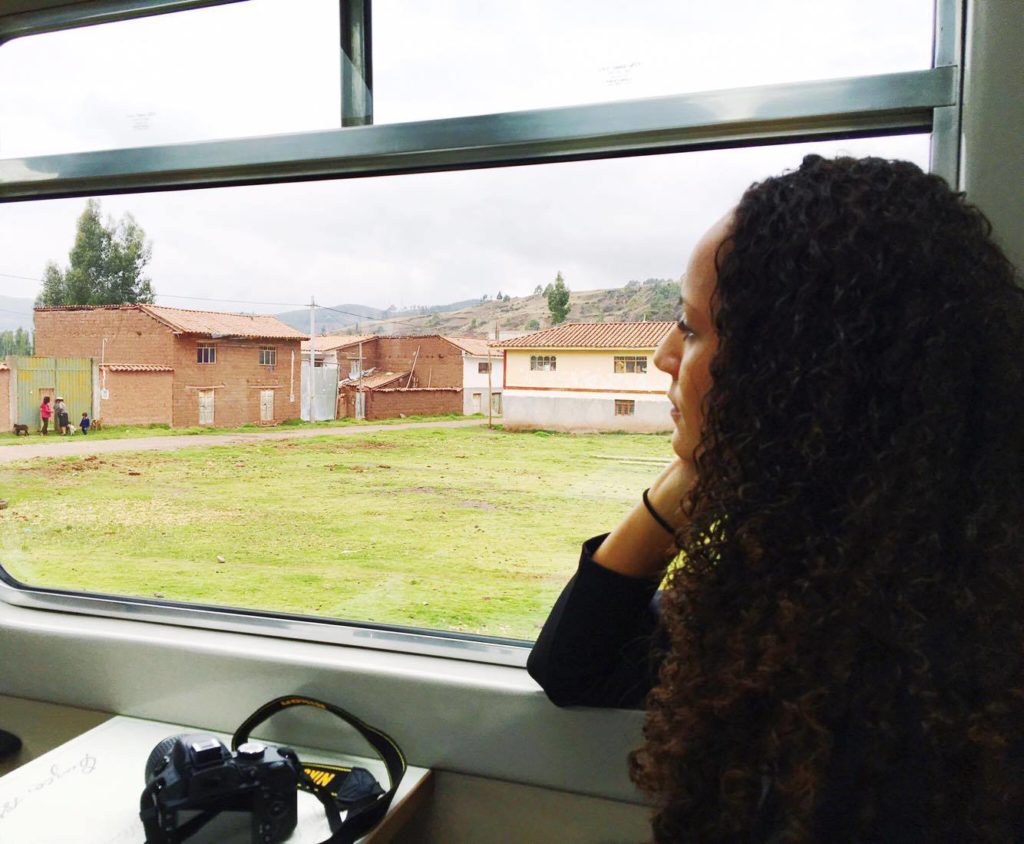
From the moment the train screeched out of the station, my eyes were glued to the window. The densely populated neighborhoods faded into rural flat lands. Sheep were grazing, men tended to the fields, mothers worked outside their clay houses with infants strapped to their backs. A group of young boys playing soccer in the street stopped their game to wave as our train rolled through.
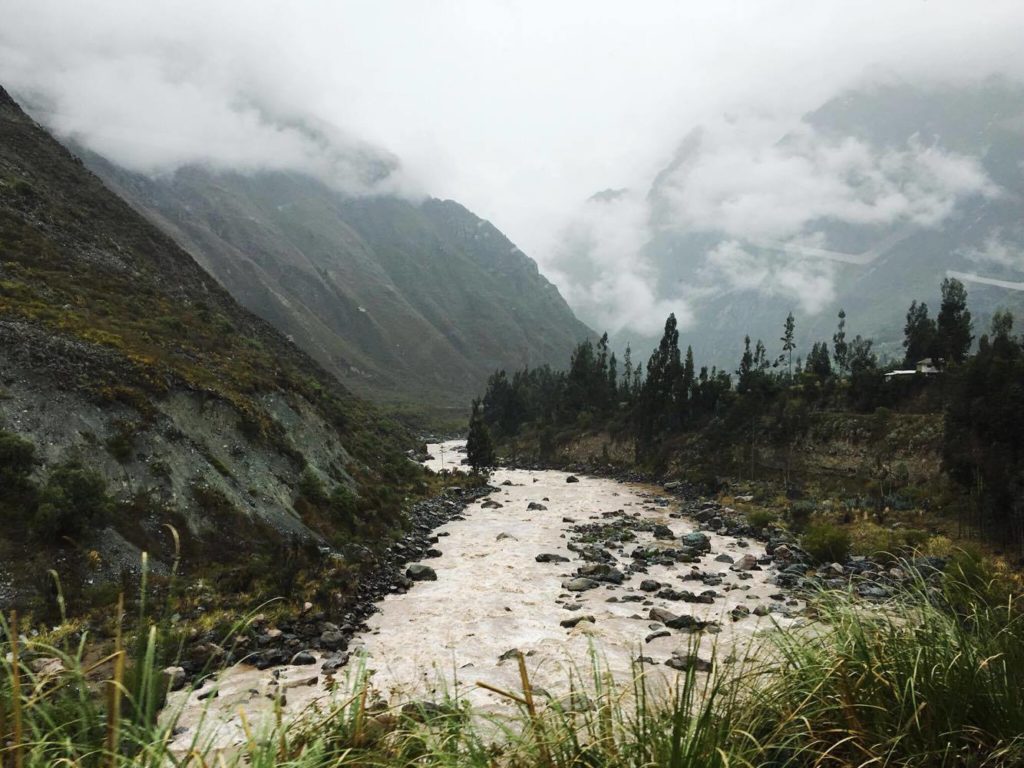
A view of the Urubamba River from the train
30 minutes later we reached the Ollantaytambo (map it) station and picked up a few more travelers. By then, the vast flatland had transformed into jagged mountainous terrain. We found ourselves at the top of rocky ravines with rushing rapids down below. The train came to a complete stop and the conductor informed us that rather than winding around the mountain, we would zig zag back and forth down the mountain allowing us to move several hundred feet in a matter of minutes. I sipped my hot coffee while nibbling my sprinkle cookie that had been served earlier and marveled at the natural grandeur out my window.
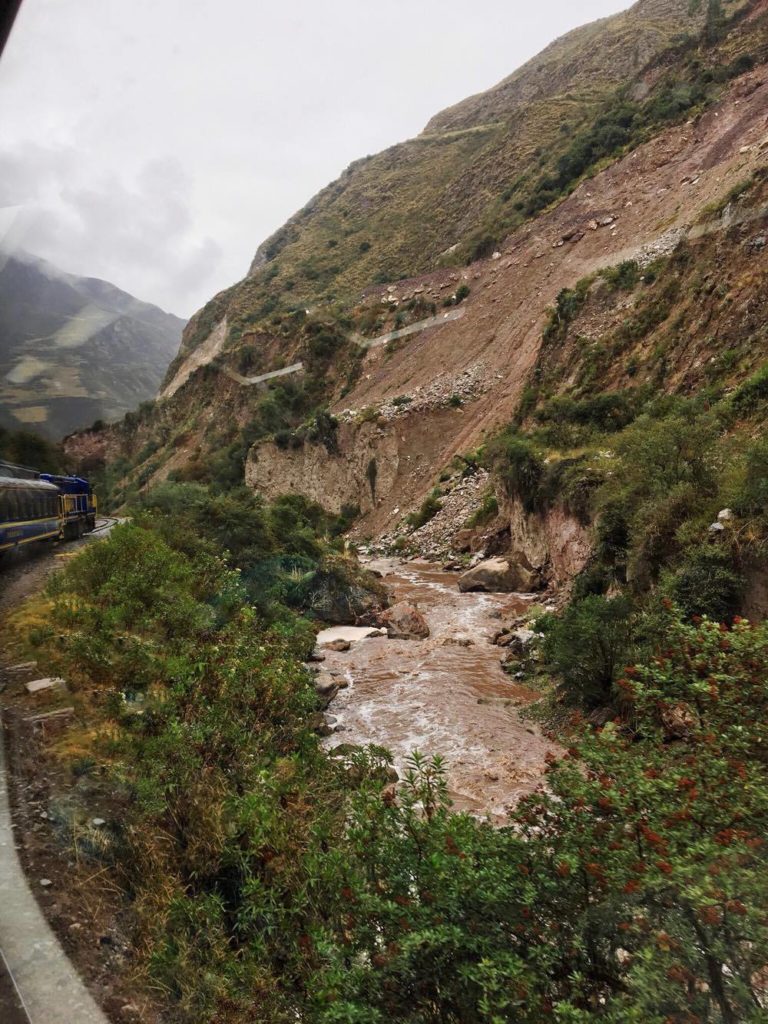
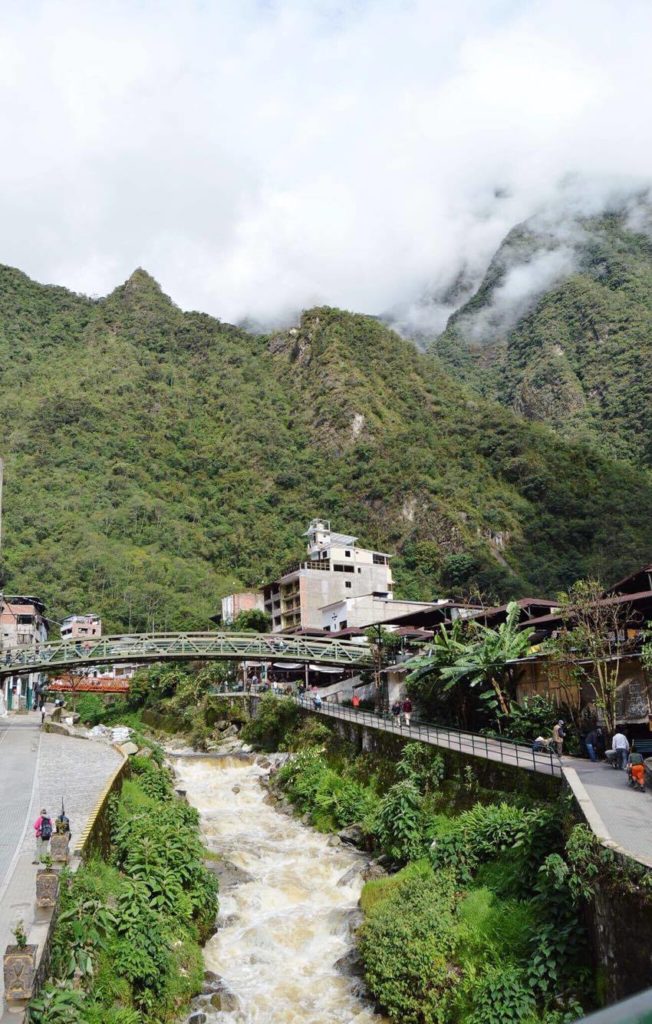
The town of Aguas Calientes
Several hours, and a few more cookies later, the train pulled into Aguas Calientes (map it). This quiet town in the Machu Picchu valley caters to travelers and backpackers with a smattering of hostels, souvenir shops and cafes all nestled under looming mountain peaks. We were immediately greeted by Jessica, a representative from the tour company hi quickly shuttled us through a colorful shopping market to the bus.
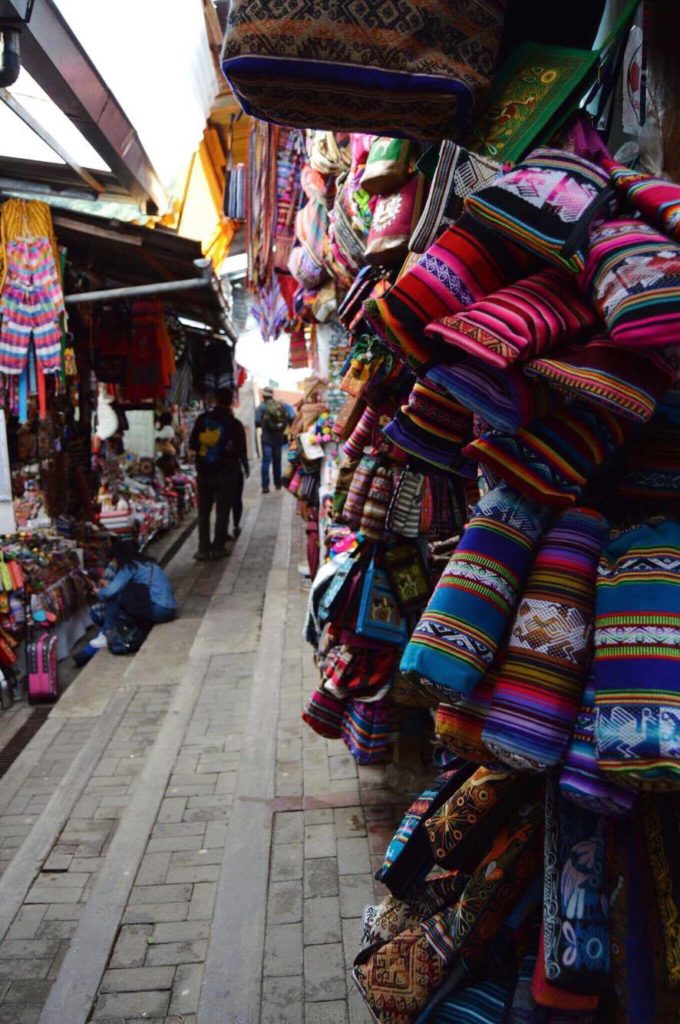
The colorful market in Aguas Calientes
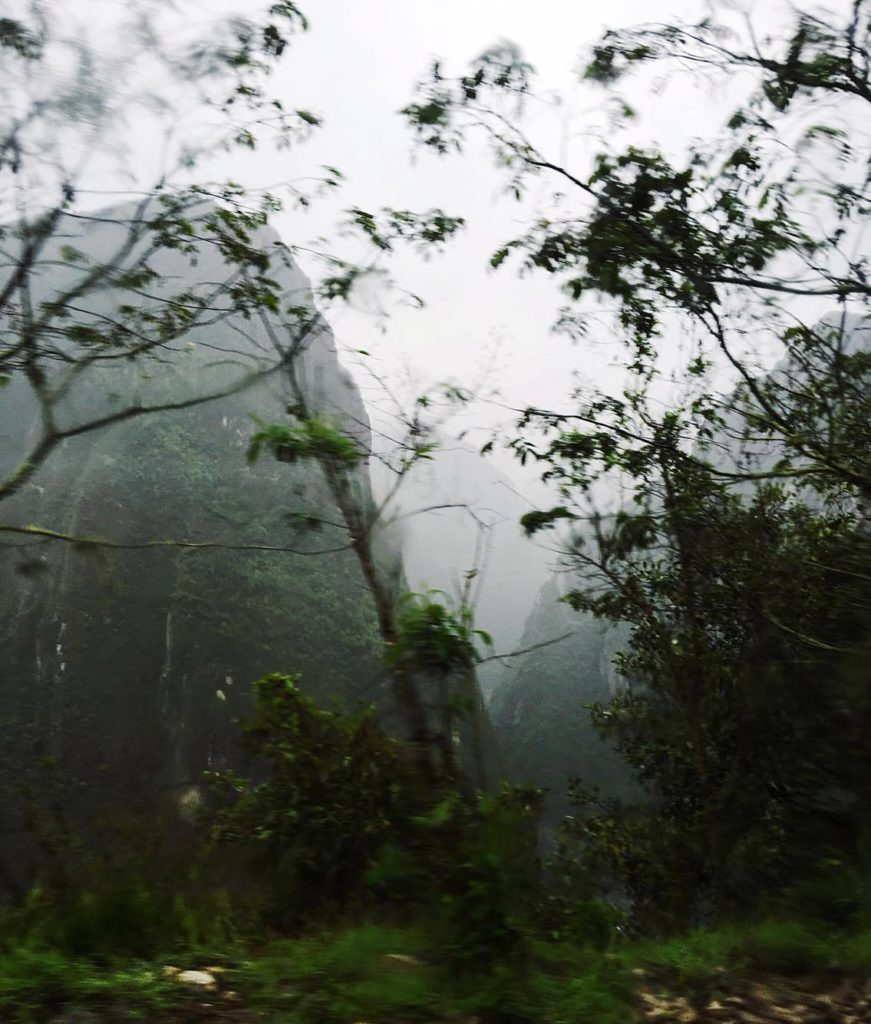
A rainy view from the bus window
The ride to the top was an adventure in and of itself. 30 minutes up a winding single lane road, slick with mud. There was nothing preventing the bus from careening over the bottomless cliff except the driver’s skill. He managed to maneuver around oncoming bus traffic, backpackers, poor visibility and treacherous road conditions without flinching. I spent most of the ride clenching my teeth and leaning away from the cliff thinking it might help balance the bus and prevent it from plummeting over the edge. I took a pause from leaning on a few occasions to peer out the window. I could only make out the silhouettes of the mountains through the thick fog and rain. I had a sinking feeling that after traveling all this way, I might not even catch a glimpse of the famous mountain. I had a choice – complain about circumstances that were out of my control or embrace the moment, rain, fog and all and not allow it ruin the day.
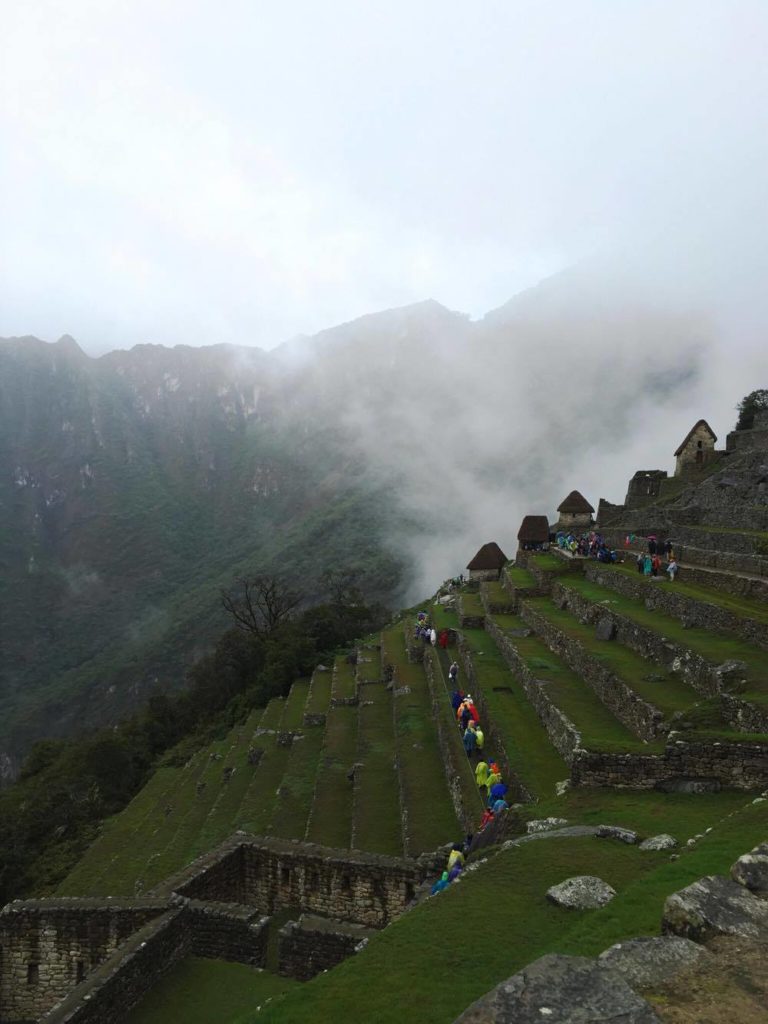
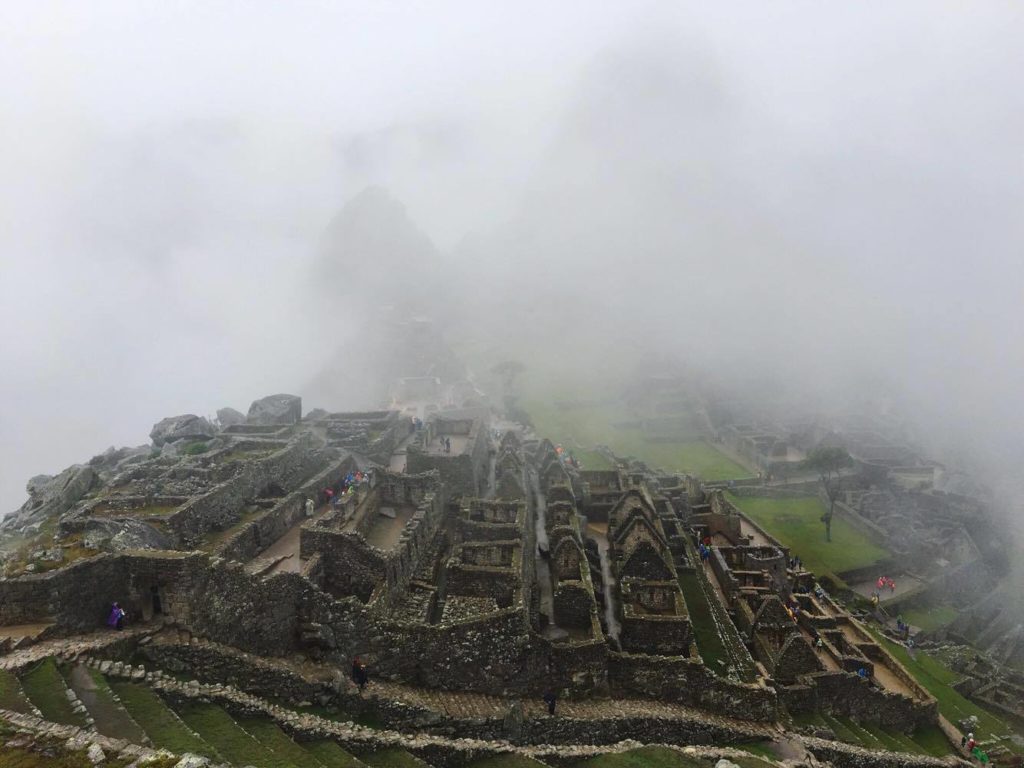
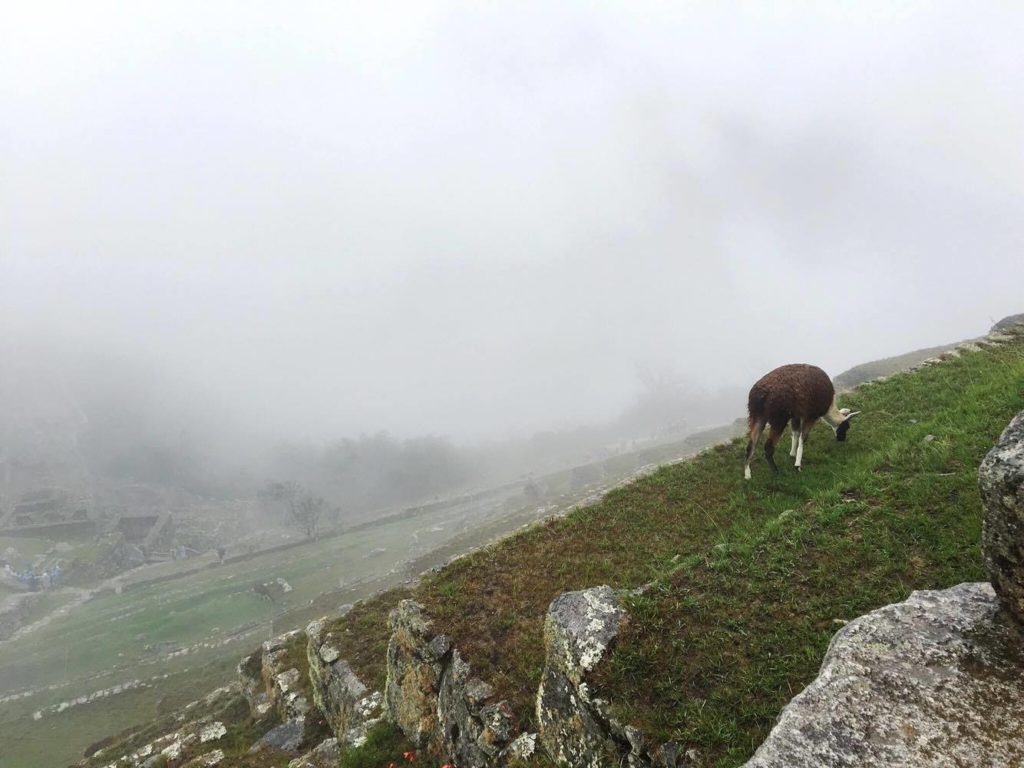
We safely reached the top and were met by our friendly guide, Wilfredo, along with 7 other members of our group. The rain still had not subsided. My flimsy poncho was a no match for the torrential downpour. The rain also prevented me from using my camera, but I managed to snap a few photos from under my poncho. Because of the weather conditions, our tour began on the lower level of the ruins. Typically groups are taken to the top first to capture the iconic photos of the peaks, but because visibility was so bad, nonexistent really, Wilfredo decided to switch up the order.
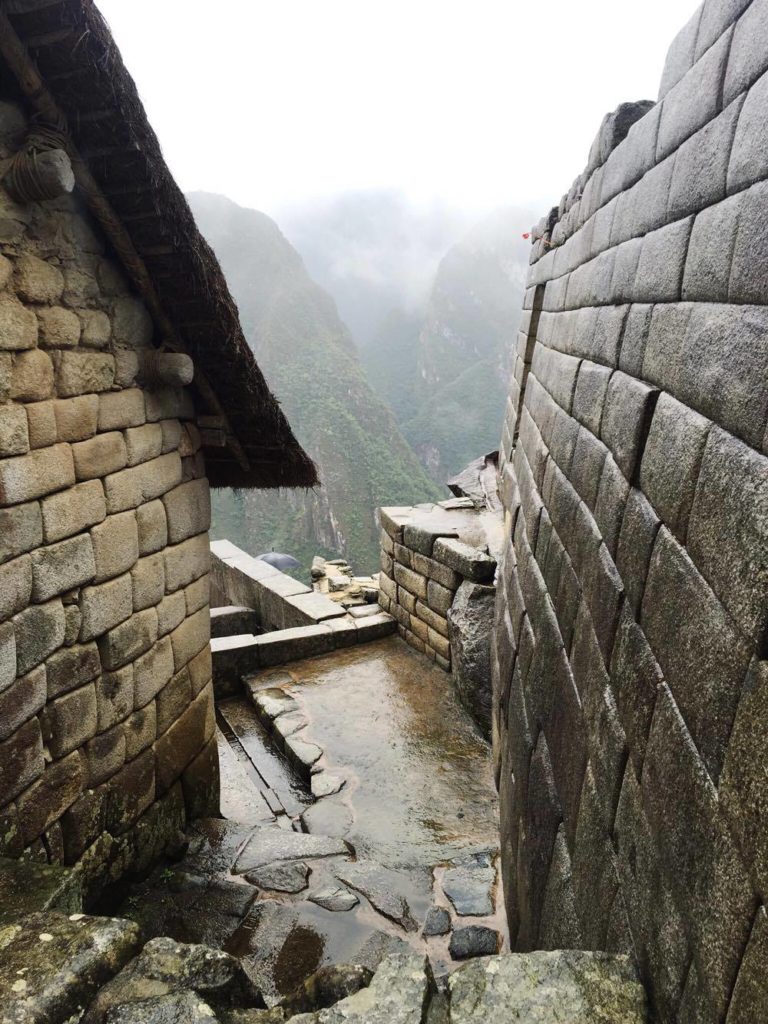
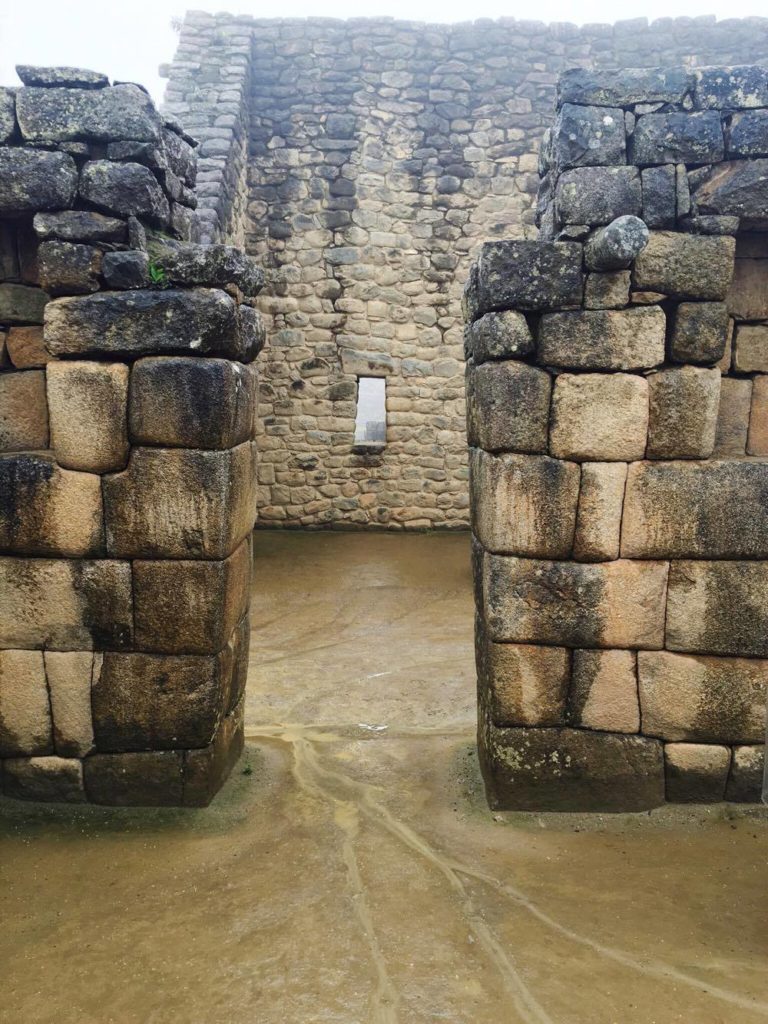
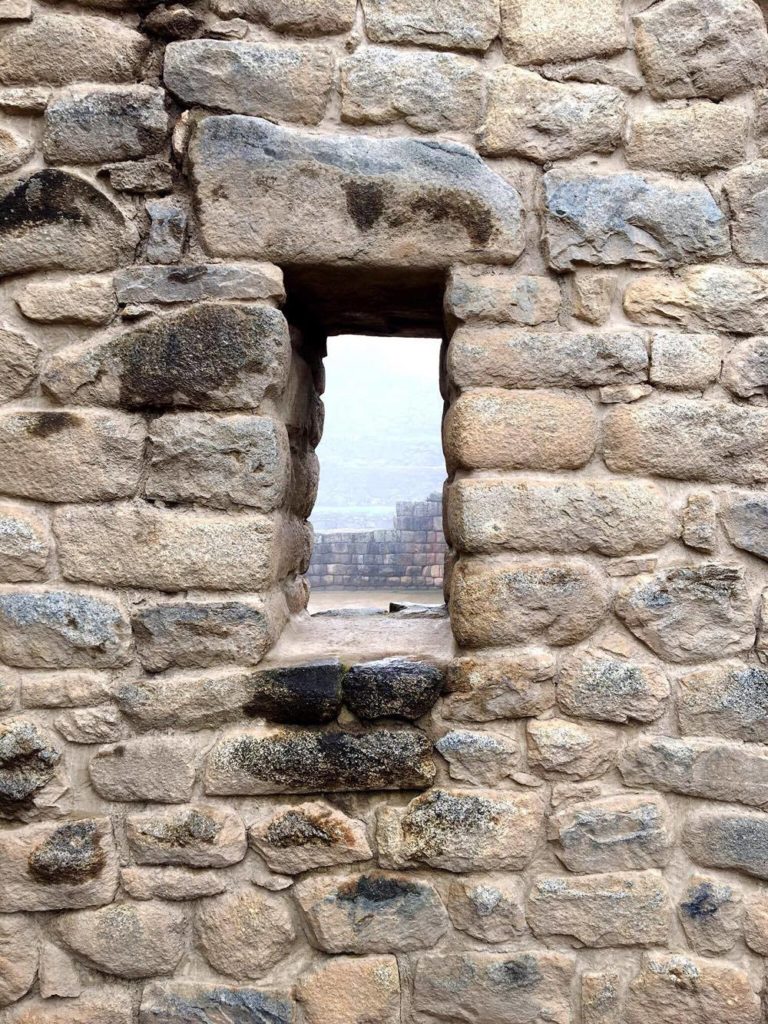
Wilfredo explained the mystery of the mountain. Built in the 15th century, Machu Picchu served as a summer palace for the most powerful Incas. Spanish conquerors eventually forced the Incas to flee, but their palace remained intact and untouched for centuries. It wasn’t until 1911 that the American professor and historian Hiram Bingham rediscovered the ancient city. We climbed up and down the different stories and wandered through a labyrinth of chambers, some believed to have been used for human sacrifice. The construction of the city remains a mystery. It’s unclear how the Incas managed to complete this architectural feat. The precise arrangement of the beveled stones continues to mystify experts. The absence of a solid theory has allowed wild conspiracies to evolve ranging from magic to aliens.
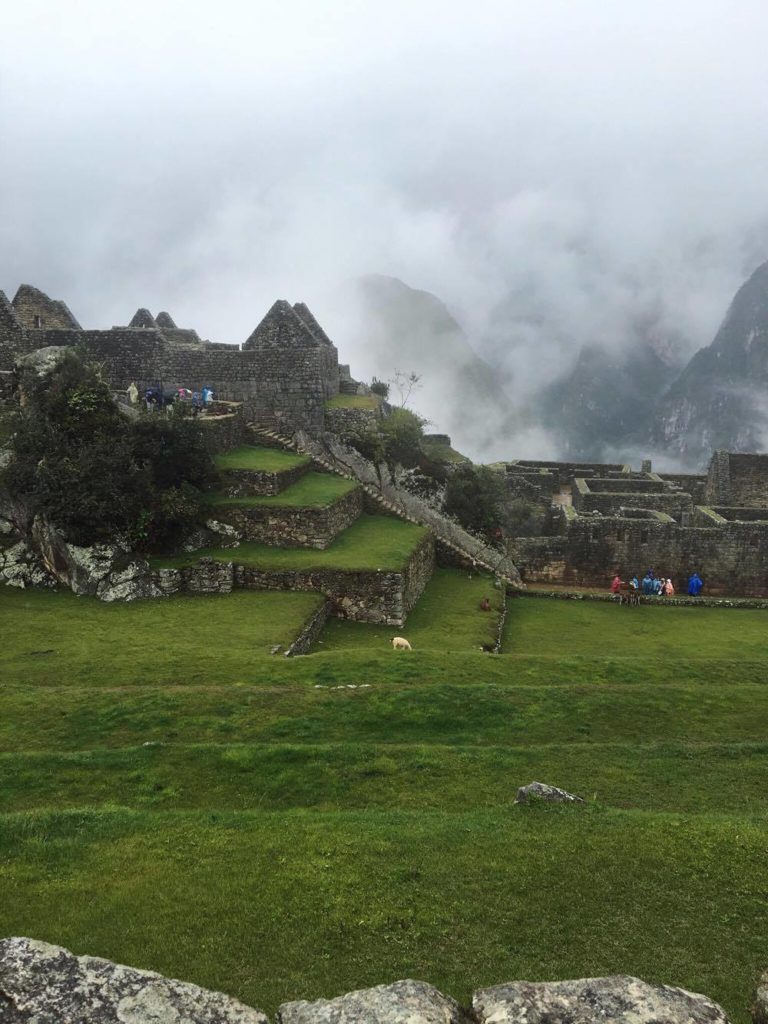
The experience was surreal. Walking among the ruins, I tried picturing what it was like centuries ago. Its natural beauty, the unsolved mysteries and bloody history all swirled together in the heavy mist.
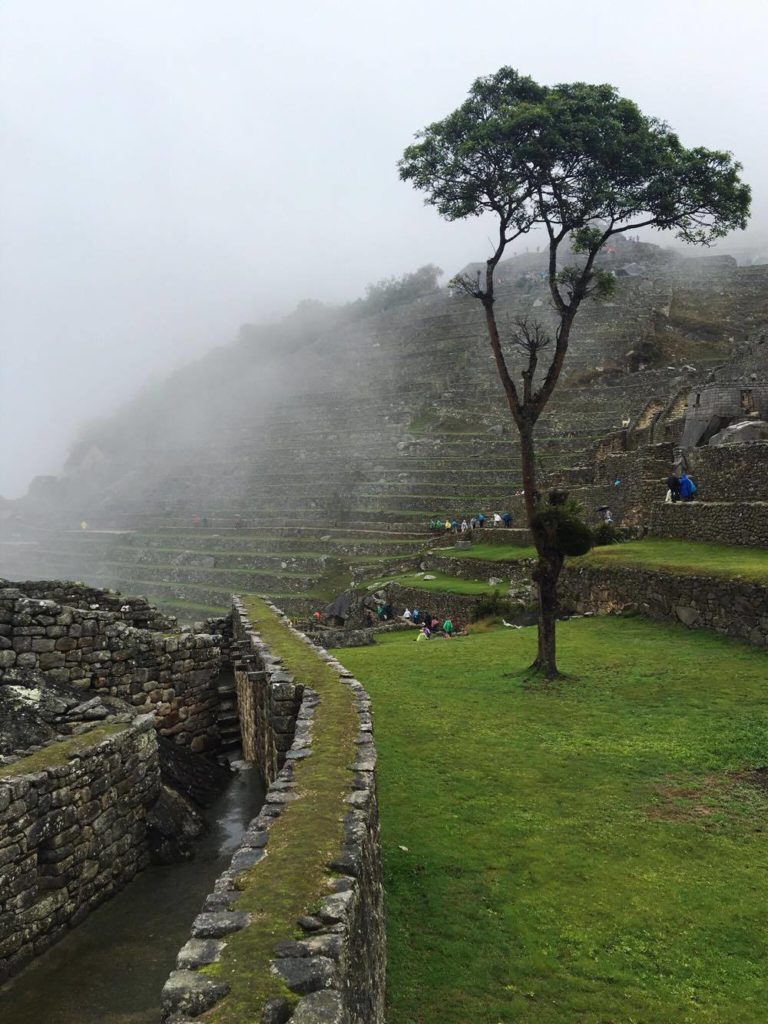
When the tour concluded we had some time to explore on our own. The rain had dissipated, but the fog remained. Like a thick white veil, it hovered over the mountains, shielding them from view.
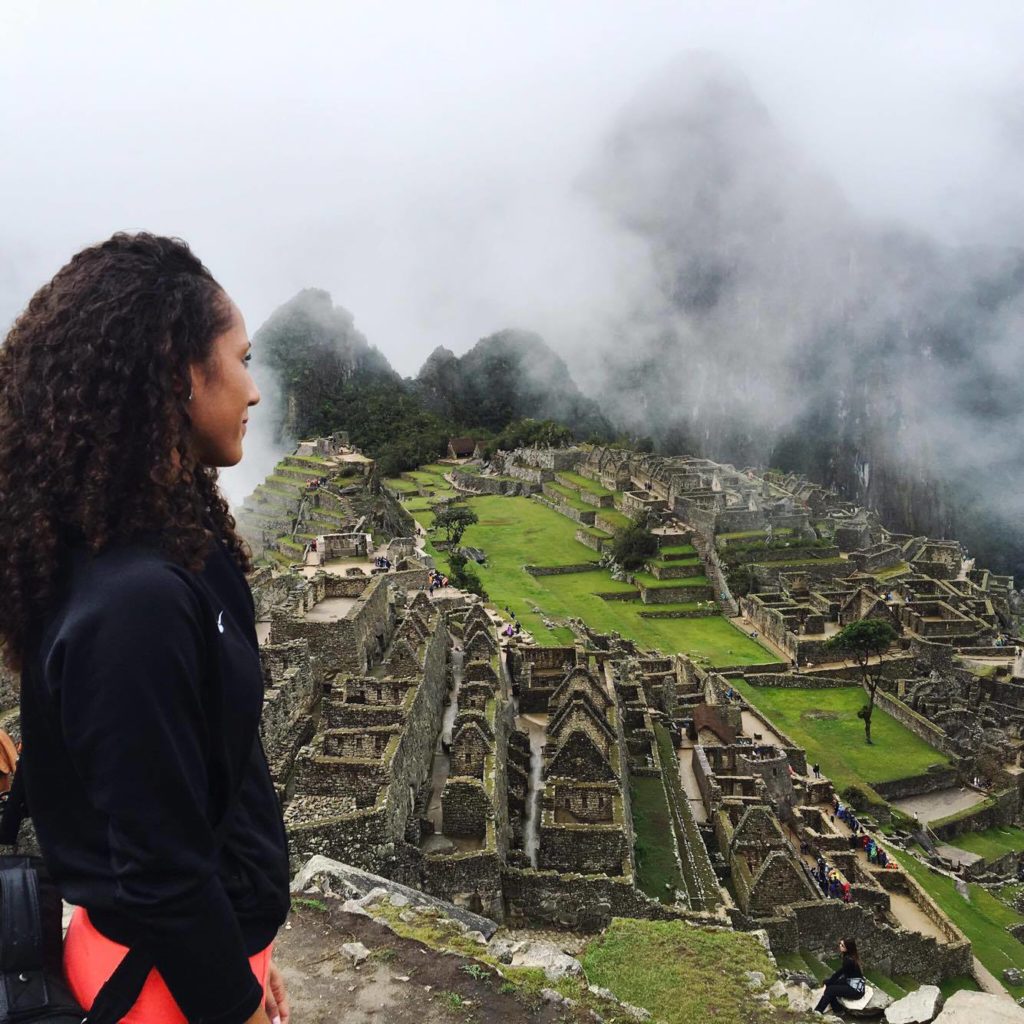
We were nearing the end of the visit when I noticed the clouds begin to shift. My gaze turned upward and I saw patches of blue sky begin to emerge. When I glanced back at the ruins, I let out an audible gasp. The fog had cleared just enough to reveal an emerald carpet spread beneath the ruins. For the first time that day I got a glimpse of the famous peaks. Both Machu Picchu and its smaller companion Huayna Picchu – meaning young mountain – had emerged from the mist. The panoramic views were overwhelming. I overheard another guide tell his group that this was the best weather he’d seen in weeks. I soaked in the moment, trying to ingrain the view in my memory, knowing I would likely witness it again. I could have stayed for hours, but it was soon time to head back down the mountain and head home.
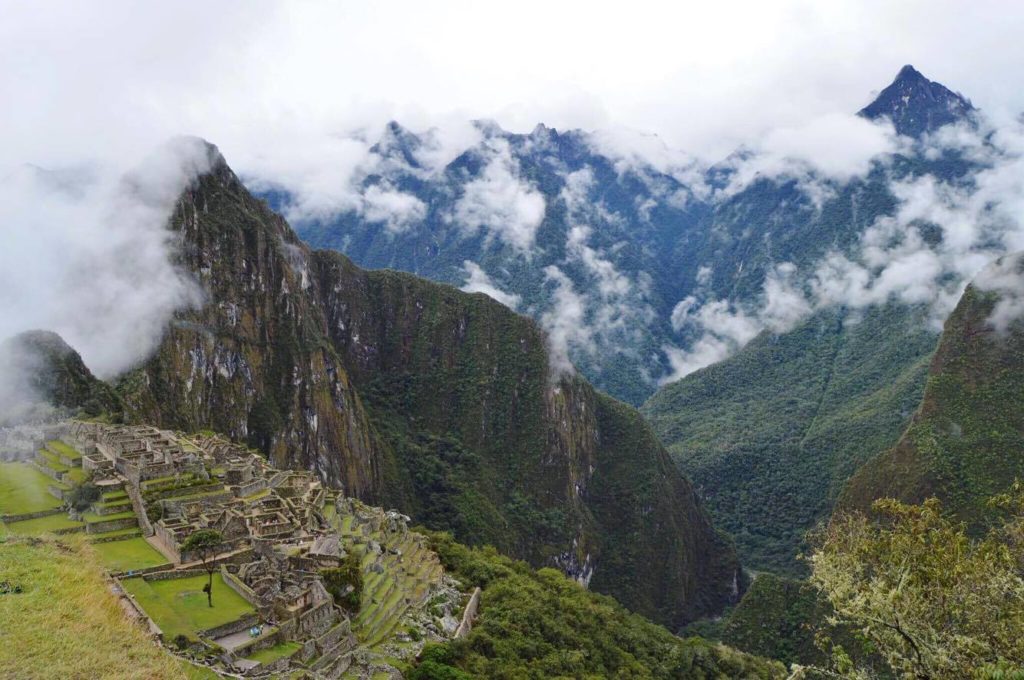
Though it’s been a year since that misty day at Machu Picchu, the experience is still vivid. I’m grateful to have visited when I did as the future of this historical sanctuary is a bit unclear. Machu Picchu was named a UNESCO World Heritage Site in 1983 which means no further preservation is allowed. While the country has limited the number of visitors each day, it remains a major tourist attraction that provides significant revenue to the country. Striking the appropriate balance between protecting this historical site while still recognizing its role as a vital economic resource is ongoing.
Have you visited Machu Picchu? Do you have a desire to? What was your most awe inspiring travel experience? Share your comments below!
PIN IT!
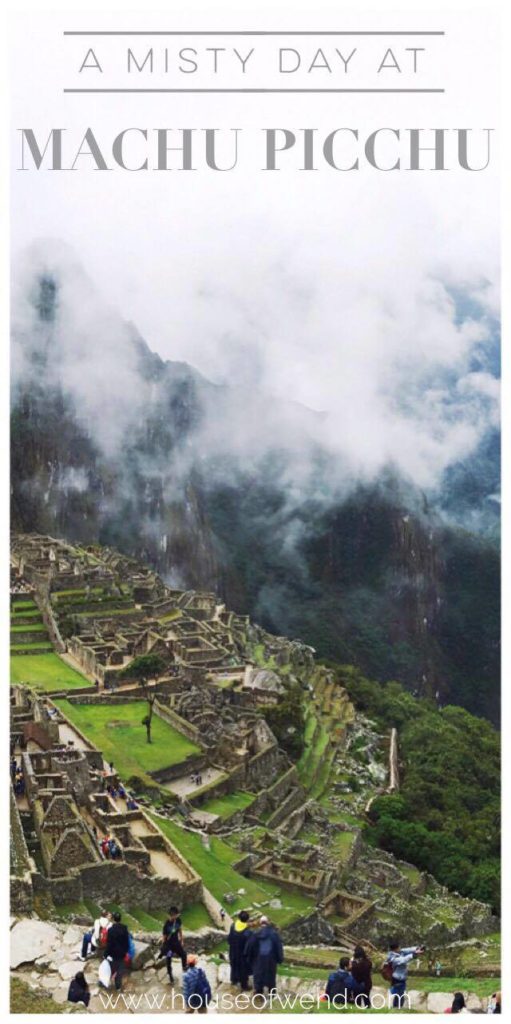

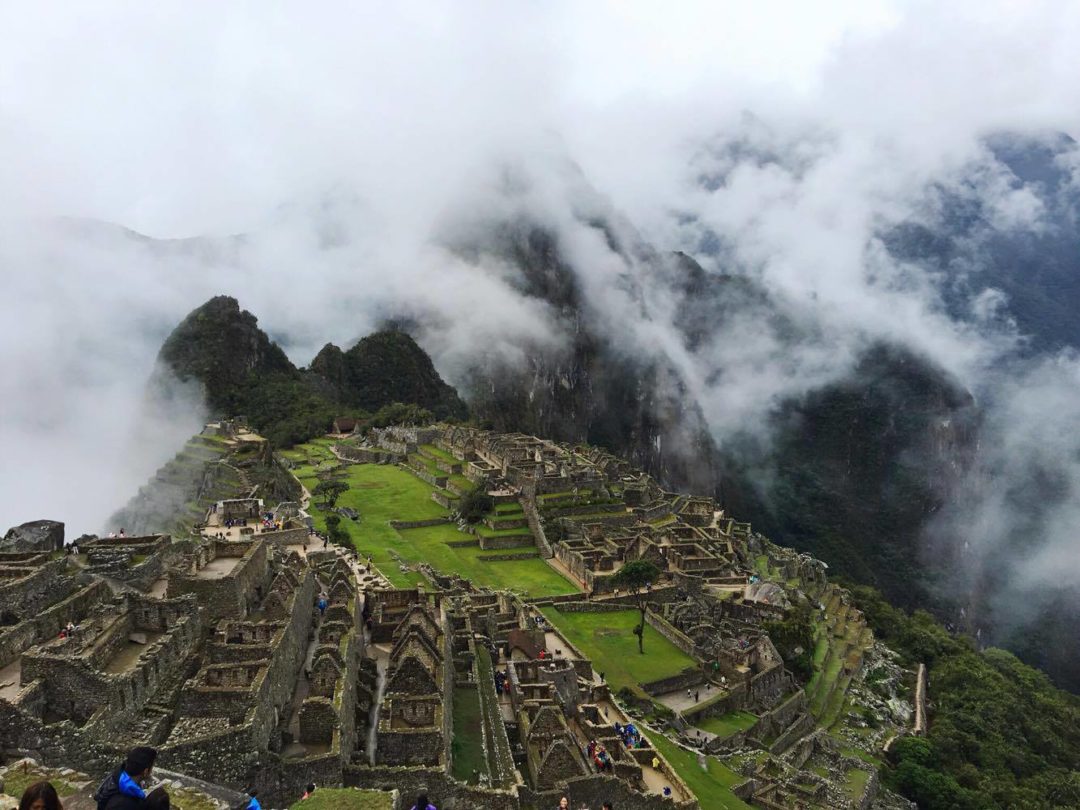
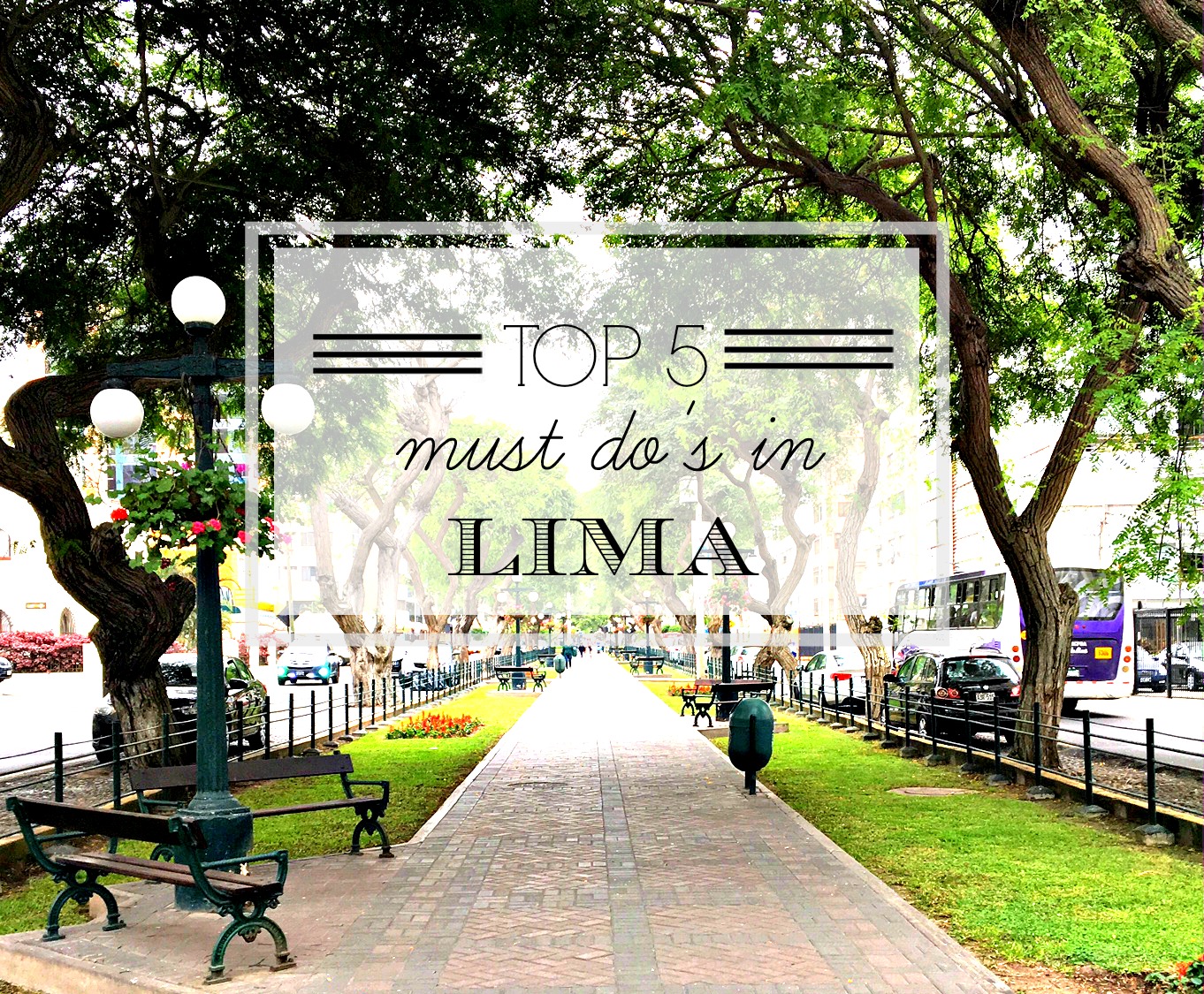


No Comments